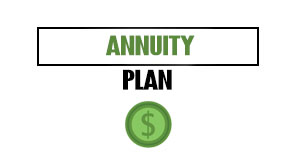Traditionally, retirement has been seen as the ultimate finish line-a time to finally relax, sleep in, and say goodbye to the rat race. Many retirees, however, find that the absence of structure can be equally unsettling as its presence. So, the question becomes: What do I actually want my day to look like?
In retirement, you’re free to design a new life for yourself. Retirees who are most fulfilled build new norms that reflect who they are and what matters most to them. Stuck? Here’s how to plan a retirement that brings joy, meaning, and balance.
Table of Contents
ToggleWhy Structure Still Matters
While you may wish you didn’t need an alarm clock, humans thrive on routine and rhythm. Without some structure, days can quickly blur together, leading to boredom and depression. There is evidence that retirees who have daily routines report greater levels of happiness, cognitive function, and health.
But, structure isn’t rigidity. It means allowing for spontaneity while setting a framework for the day.
Step 1: Visualize Your Perfect Day
Visualization is a powerful tool for building your ideal retirement day. From the moment you wake up until you gently drift off to sleep, imagine your ideal retirement day. During this exercise, ignore any thoughts about what you “should” be doing and suspend all judgment. Instead, focus on what truly energizes, stimulates, and fulfills you.
To make this vision a reality, ask yourself these questions;
- What time do I really want to get up in the morning?
- What’s the first thing I want to do?
- Are there any activities that would bring me true joy, intellectual stimulation, or deep relaxation?
- What level of social interaction feels right for me?
- How can I move my body and take better care of my health?
- Is there something or someone that gives me a sense of purpose?
- How can I wind down gracefully at the end of the day?
The goal of this exercise isn’t to set your whole future in stone. The goal is to create a guiding vision that will help you identify your true desires rather than falling into default patterns.
Step 2: Balance Four Key Ingredients
Even though every ideal retirement day is different, a truly satisfying and sustainable one always includes four essential components. A fulfilling post-work life is built upon these four pillars;
- Purposeful activity. This doesn’t necessarily entail paid work. In other words, it’s getting up for a reason, having a sense of purpose, and contributing to something bigger than yourself. Examples could be volunteering, immersing yourself in creative pursuits, becoming a mentor, or learning continuous skills. In addition to combating stagnation, purpose provides profound satisfaction.
- Physical movement. Keeping our bodies active is essential for our physical health, mental sharpness, and emotional well-being. In retirement, the best routines are those that incorporate physical activity into the day-to-day routine. Exercise doesn’t have to be strenuous; it can be as simple as a brisk walk, gentle stretching, yoga class, swimming, or gardening. A simple, consistent movement routine can make a big difference in energy levels, mood, and vitality.
- Connection. Social interactions are vital for maintaining cognitive health, reducing loneliness, and promoting emotional well-being in humans. Even so, relationships can take many forms, like simple daily conversations, mealtimes with friends and family, hobbies, or community involvement.
- Joy and relaxation. Any activity that brings you pure, unadulterated happiness is included in this category. This can consist of reading a good book, traveling, trying out new recipes, painting, playing an instrument, or just getting a morning cup of coffee, or going to the movies. During these moments, you are reminded of how free you are.
With these four essential ingredients combined, your retirement day begins to flow naturally, an organic rhythm that supports your mental and physical well-being.
Step 3: Design Your Daily Framework
After you’ve identified what matters most to you, create a gentle, flexible framework for your day. This isn’t about creating a rigid schedule, but rather a comforting outline that provides direction without overriding.
It might look like this;
- Morning. Get up comfortably. Take part in light exercise. Sip a cup of coffee or enjoy a leisurely breakfast. Spend time reading, journaling, or planning in quiet reflection.
- Late morning to midday. Participate in meaningful work (volunteer projects, creative hobbies, learning endeavors). Interact with others (calls, group activities, outings).
- Afternoon. Taking part in leisure activities (gardening, cooking, sports, crafts). Schedule appointments, run errands, or pay bills.
- Evening. Whether you’re alone or with family and friends, enjoy dinner. Relax with entertainment (books, TV, music). For a restful night’s sleep, implement a gentle wind-down routine.
By using this flexible framework, you can give your day intrinsic structure without making it feel like a chore. As your interests change, your energy levels fluctuate, or unexpected opportunities arise, you can mix and match these pieces as needed.
Step 4: Redefine “Productivity” in Retirement
One of the biggest challenges retirees face is redefining what it means to be productive. Traditionally, your sense of worth and accomplishment was tied to your success as a career, meeting deadlines, and delivering tangible results. Those old metrics simply disappear in retirement.
This is a great opportunity to embrace a much broader, richer definition of productivity. Retirement can bring countless fulfilling opportunities, like;
- Learning a new skill or hobby.
- Mentoring others.
- Volunteering.
- Improving your physical fitness.
- Creating art, music, or writing.
- Cultivating your garden or perfecting your culinary skills.
- Deepening relationships with family and friends.
To achieve personal fulfillment, growth, and contribution, you may want to consciously replace the old, work-centric metrics of “accomplishment,” if you want to. You don’t have to “accomplish” something monumental every day to have a meaningful day. The key is to actively engage your intellect, talents, and spirit each day in ways that matter to you.
Step 5: Plan for Flexibility and Fun
While a gentle structure can be beneficial, too much rigidity can turn retirement into a burden. Being able to pivot, adapt, and seize new opportunities spontaneously is the profound beauty of this phase of life. If you’re able to say “yes” to last-minute invitations, embark on spontaneous trips, or simply relax, you can take advantage of these days.
In other words, give yourself plenty of buffer time and leave room for the unexpected:
- Be open to spontaneity. Don’t be afraid to say “yes” to an unexpected lunch date or community event.
- Explore new hobbies without pressure. Explore new interests purely for the sake of discovery, without trying to master them.
- Take “days off” from structure when you need rest. Allow yourself to unwind and rejuvenate on a completely unstructured day.
- Embrace seasonal shifts. You might have a different ideal day in summer compared to winter. Adapt your framework as the seasons change.
Keep in mind that the goal isn’t perfectionism or a rigid schedule — it’s harmonious balance. It’s about finding a rhythm that’s comfortable and doesn’t put you in pain.
Step 6: Mind Your Mental and Emotional Health
In addition to being a financial transition, retirement involves a profound psychological change. There is often a “honeymoon” phase in retirement, followed by periods of boredom, loneliness, and a sense of purposelessness, particularly when your professional role was central to your identity.
During this important life stage, you can proactively support your mental and emotional health by:
- Actively stay socially connected. Keep in touch with friends, family, and former colleagues regularly.
- Seek out new groups or clubs. Get involved in organizations aligned with your hobbies or community interests.
- Consider part-time work or consulting. This can be a good replacement for professional stimulation if you are lacking it.
- Practice mindfulness, meditation, or gratitude. These practices cultivate peace and reduce stress.
- Engage in continuous learning. Cognitive function is enhanced by keeping your brain active.
- Don’t hesitate to seek professional support. The best way to deal with persistent sadness, isolation, or anxiety is to reach out to a therapist or counselor.
Your Retirement, Your Design
When it comes to the ideal retirement day, there’s no one-size-fits-all. Some thrive on activity, and some thrive on quiet reflection. It’s all about being intentional. You can, however, make your retirement one of the most fulfilling chapters of your life by planning your days with purpose.
FAQs
What’s the biggest mistake retirees make regarding their daily routine?
Often, the biggest mistake is giving up on any structure or purpose. A lack of routine can result in boredom, a sense of aimlessness, and even social isolation, negatively affecting mental and physical well-being.
How do I find a new purpose after leaving a career that defined me?
Exploring past hobbies, volunteering for causes you care about, pursuing new learning opportunities, and engaging in creative endeavors are common ways of finding new purpose. If you’re not financially compensated, consider what truly motivates you and how you can contribute meaningfully.
Is it okay to have quiet, unstructured days in retirement?
Absolutely!
In retirement, it’s important to embrace flexibility and rest as well as some structure. We all need quiet, unstructured days to relax, act spontaneously, or just “be” rather than “do”. We need a framework that supports us, not restricts us.
How important is social connection in retirement?
Having a strong social connection is vital for mental health and longevity. Social ties contribute to a longer and healthier life, increase cognitive function, and reduce loneliness and depression. As such, you should maintain existing friendships and seek out new communities (clubs, volunteer groups, classes) that match your interests.
What if my “ideal day” changes over time?
It’s okay for your ideal day to evolve. Retirement, after all, is a dynamic phase of life. Your interests, energy levels, and priorities will likely change. By regularly revisiting your “ideal day” vision and adjusting your daily framework (e.g., annually or quarterly), you ensure that your routine supports your evolving needs and desires.
Image Credit: Onur; Pexels
















